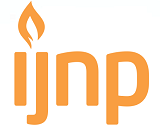Nurse’ Knowledge and Their Performance on Cardiopulmonary Resucitation (CPR) in Critical and Emergency Care Unit
DOI:
https://doi.org/10.18196/ijnp.3193Keywords:
Nurse, knowledge, Skills, Cardiopulmonary Resuscitation (CPR), EmergencyAbstract
Background: Knowing the important relation between knowledge and skill is important because it reflexes the action that nurses do to save people life.
Objective: This research aimed to determine the relationship between the nurse's knowledge level and their performance on cardiopulmonary resuscitation in critical and emergency care unit.
Method: The study was quantitative descriptive with the cross-sectional design used sequential sampling with 30 nurses in critical and emergency care unit. The data were analyzed using the Fisher Exact Test. Data was taken from questioner and observational assessment using a standard operating procedure which was developed by a hospital.
Results: The results of this study found that there were 63.3% respondents which all of them had poor knowledge also poor performance on doing cardiopulmonary resuscitation.
Conclusion: There is a relation between nurse’s knowledge level and the nurse’s performance on undertaking cardiopulmonary resuscitation. The more knowledge they have the better performance they have on cardiopulmonary resuscitation. Routine training and evaluation may be useful to increase nurses’ knowledge and skills.
References
Abdul, Halim. Rottie, Julia. Karundeng, Michael Y. 2016. Analisis Perbedaan Response Time Perawat Terhadap Pelayanan Gawat Darurat di Unit Gawat Darurat di RSU GMIM Pancaran Kasih dan di RSU TK.III Robert Wolter MonginsidiKota Manado. Universitas Sam Ratulangi
AHA. (2010). Guidelines CPR ECC 2010 17-07-2018, from http://www.heart.org/idc/groups/heart-public/@wcm/@ecc/documents/downloadable/ucm_317350.pdf
AHA. (2005c). Highlights of the 2005 American Heart Association Guidelines for Cardiopulmonary Resuscitation and Emergency Cardiovascular Care. Currents in Emergency Cardiovascular Care, 16(4), 1-28. PubMed.Gov
Alspach, G. (2005). CPR: The vanishing competency. Critical Care Nurse, 25(6), 8-12. Critical Nurse Care.
Hazinki, Mary Fran & Others. (2015). Fokus Utama: Pembaruan Pedoman American Heart Association 2015 Untuk CPR dan ECC. Retrieved from https://eccguidelines.heart.org/wp-content/uploads/2015/10/2015-AHA-Guidelines-Highlights-Indonesian.pdf
Bastable, S. B.(2002). Perawat Sebagai Pendidik. Jakarta: Penerbit Buku Kedokteran EGC
Indonesia Health Minister. 2017. InfoDatin: Information and Data Center of Indonesia Health Minister. Jakarta
Hanafi, A. (2007). Peran Ruangan Perawat ICU Dalam Memberikan Pelayanan Kesehatan di Rumah Sakit. Medan: USU
Hermawan, H. (2011). Hubungan Pengetahuan Perawat tentang Kegawatan Napas dengan Sikap Penanganan Gawat Napas pada Neonatus di Ruang Perawatan Intensif PKU Muhammadiyah Delanggu Klaten. Skripsi. Tidak dipublikasikan STIKES Surya Global Yogyakarta
Kuhnigh, H & Sefrin P. (2004). Skills and Self Assessment in Cardio-Pulmonary Resuscitation of the Hospital Nursing Staff.
Mayo Clinic. First aid Cardiopulmonary resuscitation (CPR): First aid. Retrieved from https://www.mayoclinic.org/first-aid/first-aid-cpr/basics/art-20056600.
Thamrin, S. (2010). Gambaran Pengetahuan Perawat dan Bidan tentang Resusitasi Jantung Paru pada Neonates di RSIA Siti Fatimah Makassar. Skripsi. Program Studi Ilmu Keperawatan Fakultas Kedokteran Universitas Hasanuddin Makassar
Wardani, Beni Mutiara. (2013). Pengaruh Kualitas Pelayanan Terhadap Kepuasan Pelanggan dari Sudut Pandang Pasien dan Pendamping Pasien. Universitas Katolik Indonesia Atma Jaya Jakarta
Downloads
Published
Issue
Section
License
License
Articles published in the IJNP (Indonesian Journal of Nursing Practices) are licensed under a Attribution 4.0 International (CC BY 4.0) license. You are free to:
- Share — copy and redistribute the material in any medium or format.
- Adapt — remix, transform, and build upon the material for any purpose, even commercially.
This license is acceptable for Free Cultural Works. The licensor cannot revoke these freedoms as long as you follow the license terms. Under the following terms:
Attribution — You must give appropriate credit, provide a link to the license, and indicate if changes were made. You may do so in any reasonable manner, but not in any way that suggests the licensor endorses you or your use.
- No additional restrictions — You may not apply legal terms or technological measures that legally restrict others from doing anything the license permits.
Copyright
Authors who publish with IJNP (Indonesian Journal of Nursing Practices) agree to the following terms:
- Authors retain copyright and grant IJNP (Indonesian Journal of Nursing Practices) the right of first publication with the work simultaneously licensed under an Attribution 4.0 International (CC BY 4.0) that allows others to remix, adapt and build upon the work with an acknowledgment of the work's authorship and of the initial publication in IJNP (Indonesian Journal of Nursing Practices).
- Authors are permitted to copy and redistribute the journal's published version of the work (e.g., post it to an institutional repository or publish it in a book), with an acknowledgment of its initial publication in IJNP (Indonesian Journal of Nursing Practices).














